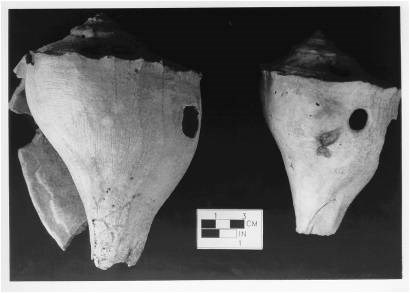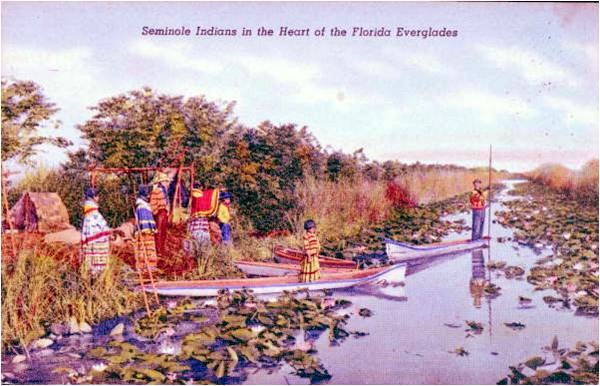|
The Calusa The Calusa occupied the southwest region, while the Tequesta, Jega, and Ais tribes were located along the east coast of Southern Florida. However, Spanish accounts suggest that the Calusa tribe were the dominant tribe of the region and operated a complex Chiefdom that was comprised of a number of village communities all organized within a chiefly hierarchy. Archaeologists consider this type of complex organization rare for non-agrarian societies. 
NPS Calusa village communities were concentrated along the south west coast. They depended on fishing, as well as systematic foraging for sustenance. Living among the coastal mangroves of the Florida Gulf Coast, the Calusa utilized the abundance of shells around them to create their built environment. Archaeologists have identified shell mounds, which were piles of empty and discarded shells that had been used as tools after their contents were consumed. The Calusa also built shell formations. These built forms, called “shell works,” were large scale architecture which used ridges, mounds, platforms, and courtyards within their town plans. Their exact social uses are unknown, but it is likely that they were used to divide gathering places from sacred spaces and provide barriers from mosquitoes or ocean tides. When the Spanish encountered the Calusa upon their arrival in the 16th century, they noted their shell works, intricate ceremonial art, and complex political system. Despite their strong organization and power in the region, the Calusa disappeared not long after their interactions with Spanish explorers. By the time the English gained control of Florida in 1763, the Tequesta and Calusa tribes had been severely decimated by incoming European diseases. According to early settlers, the remaining native people retreated deeper into the Everglades, while others migrated to Cuba to begin new settlements there in the late 1700s. 
The Seminole and Miccosukee After the American Revolution the Spanish claimed ownership of Florida from Great Britain in 1783. This was soon called into question by Andrew Jackson, who invaded Florida in 1818. In 1821, the United States was able to take ownership of Florida and Jackson’s exploits to seize all of Florida continued. In 1835 the second Seminole War began and resulted in a seven year struggle to remove the Seminole population from Florida. The Seminole, living in small bands, were able to elude the incoming troops by retreating further into the mosquito ridden wilderness that left the inexperienced disoriented and frustrated. By the end of the seven years the United States relented on their earlier mission, however the Seminole population had been largely relocated. Troubled relations between the Seminole and settlers had not tempered though, and the third Seminole War began in 1855 with a Seminole attack on Fort Myers. The war ended with the signing of a treaty in which the Seminole relinquished over 2 million acres of land in 1856. The Seminole that remained continued cattle ranching and farming in relative peace. Learn more about the history of the Seminoles here. |
Last updated: April 14, 2015
